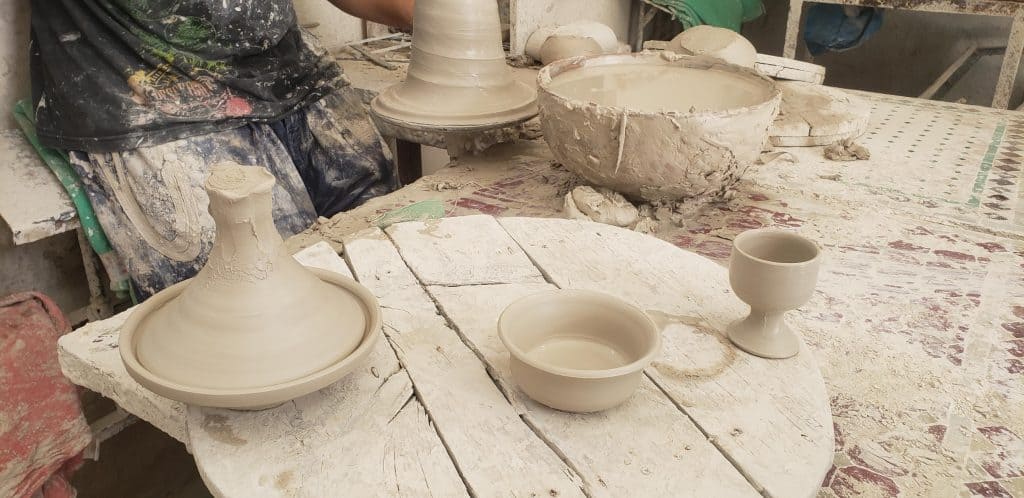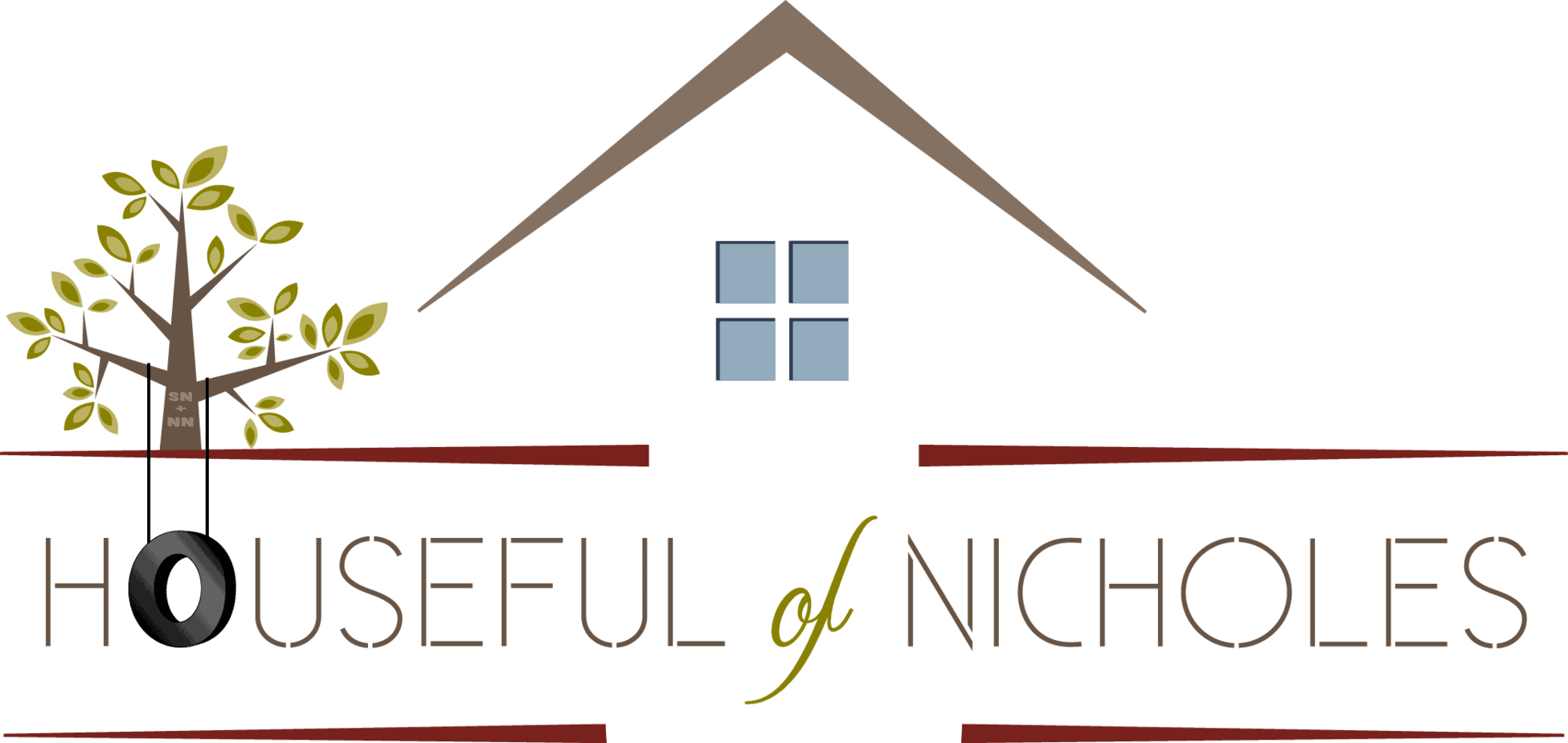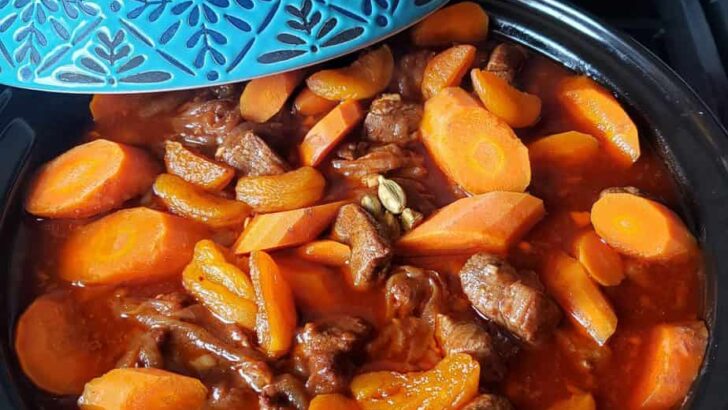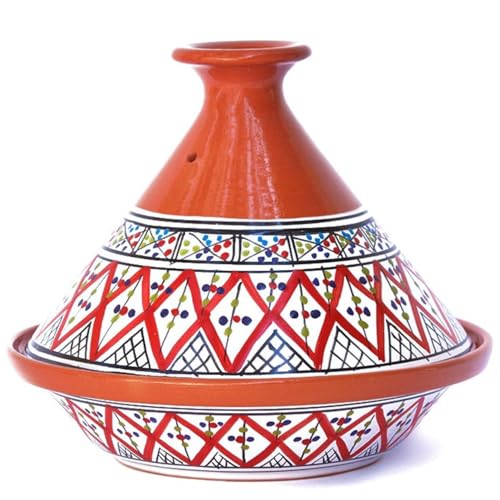Have you ever seen a beautiful piece of cookware and just had to have it? That's the way that I felt while visiting Morocco on a group trip. I went not knowing a soul but came back with connections to new people that I don't think I would have ever run into in general. The trip was through Wanderful and when we're allowed to travel freely again, I can't wait to book another trip. But I digress. One of the BEST meals I had while in Morocco was a lamb tagine with prunes. Don't knock it til' you try it.


Lamb has been plentiful during this time of uncertainty in our world, and all of my family loves the taste of it, so I don't have that to contend with. I also have an affinity for meat that tends to take a little bit of love to cook until tender. Most often, those are the cuts that were given to folks with little to no means to afford the finer cuts, and look at what they did with them! Think beef shanks, short ribs, oxtails and the like. All now very popular in restaurants and grocery stores, and quite pricey if we're being truthful.

This dish takes about two and a half hours to make from start to finish, and you'll want to do just that as the reward will be lamb so tender that it melts in your mouth, along with a rich stew sauce that you want to lap up. Tons of spices create just the right combination and adding the saltiness of olives and preserved lemons take it right to the top!
The lamb you use can be one of several cuts. Lamb stew meat, leg of lamb cut into 1-inch cubes or even the shank. I've even used pre-cut lamb chops before, and just served one, or two if I'm feeling generous, to each member of my house. The stew can be served atop couscous or rice, your choice, but it will always make a wonderful meal, and you'll wonder why you haven't taken time to make it more often.
What's a Tagine?
I have two Tagines. Tagines, also known as tajines, by nature are conical shaped cooking dishes commonly used by nomads in Northern Africa. They are also used in the Middle East, but by a different name. Since the dish we're creating is Moroccan based, we will focus on the North African cooking style.

The traditional tagine pottery, sometimes painted or glazed, consists of two parts: a circular base unit that is flat with low sides and a large cone- or dome-shaped cover that sits on the base during cooking. The cover is designed to return all condensation to the bottom. That process can be improved by adding cold water into the specially designed well at the top of the lid.
I was able to visit a pottery school in Fez, Morocco and see tagines being made in real time. The potter was amazing, and had no need for traditional measuring tools. He was able to create this top to fit the bowl perfectly in front of our eyes.

Tagine is traditionally cooked over hot charcoal leaving an adequate space between the coals and the tajine pot to avoid having the temperature rise too quickly. Large bricks of charcoal are used, specifically for their ability to stay hot for hours. Other methods are to use a tajine in a slow oven or on a gas or electric stovetop, on the lowest heat necessary to keep the stew simmering gently. A diffuser, a circular utensil placed between the tagine and the flame, is used to evenly distribute the stove's heat. European manufacturers have created tagines with heavy cast-iron bottoms that can be heated on a cooking stove to a high temperature, which permits the browning of meat and vegetables before cooking.
Tagine cooking may be replicated by using a slow cooker or similar item, but the result will be slightly different. Many ceramic tagines are decorative items as well as functional cooking vessels. Some tagines, however, are intended only to be used as decorative serving dishes. Those types you will often know by reading the bottom of the cooking pan.
Moroccan Lamb Tagine
Moroccan and Algerian tagine dishes are slow-cooked savory stews, typically made with sliced meat, poultry or fish together with vegetables or fruit. Spices, nuts, and dried fruits are also used. Common spices include ginger, cumin, turmeric, cinnamon, and saffron. Paprika and chili are used in vegetable tajines. The sweet and sour combination is common in tagine dishes like lamb with dates and spices. Tagines are generally served with bread. Because the domed or cone-shaped lid of the tagine pot traps steam and returns the condensed liquid to the pot, a minimal amount of water is needed to cook meats and vegetables. This method of cooking is important in areas where water supplies are limited or where public water is not yet available.

Moroccan Lamb Tagine
Ingredients
- 3 lbs lamb shoulder cubed into 1" pieces or lamb stew meat
- 2 Tbsp olive oil
- 3 cloves garlic minced
- 3 tsp Kosher salt
- ½ tsp cracked pepper
- 1 ½ tsp cinnamon
- 2 tsp coriander ground
- 2 tsp paprika
- 2 tsps turmeric
- 2 tsp fresh minced ginger (you can substitute ground if necessary)
- 1 onion large, sliced
- 1 cup chicken broth
- 2 Tbsp tomato paste
- 2 tsp cornstarch
- 1 teaspoon cardamom
- 5 saffron threads
- 10 dried prunes cut in half
- 4 medium-sized carrots peeled and cut on the diagonal
Instructions
To prepare the lamb.
*Set your tagine on a diffuser (you'll need one for stovetop cooking) otherwise, cook onions and brown lamb in a separate dutch oven then place in tagin to go into the oven to finish off. *
Recommended Products
As an Amazon Associate and member of other affiliate programs, I earn from qualifying purchases.






